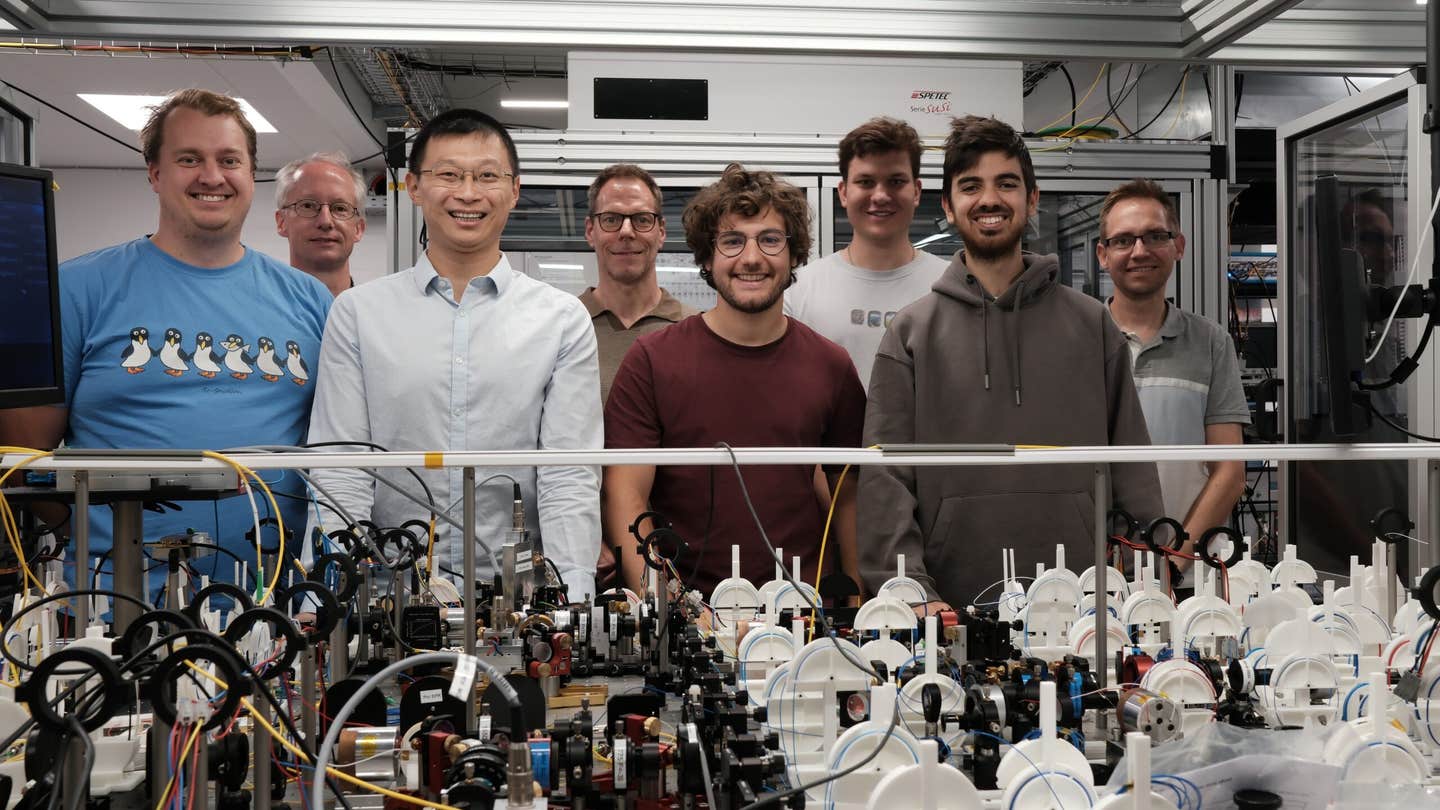Study links coffee to cancer, heart disease, and Parkinson’s disease
TCE is linked to miscarriages, congenital heart disease, and associated with a 500 percent increased risk of Parkinson’s disease.

Trichloroethylene (TCE), a widely used industrial chemical, has been employed in decaffeinating coffee. (CREDIT: CC BY-SA 4.0)
Trichloroethylene (TCE), a widely used industrial chemical, has been employed in decaffeinating coffee, degreasing metal, and dry cleaning clothes. However, growing evidence suggests that TCE may be contributing to the rise of Parkinson’s disease, the world’s fastest-growing brain disorder.
The chemical’s persistence in the environment and its toxic properties have raised serious concerns among scientists and public health experts.
TCE contamination is widespread, affecting numerous locations, including the Marine Corps base at Camp Lejeune, 15 toxic Superfund sites in Silicon Valley, and an estimated one-third of groundwater sources in the U.S.
The chemical is a known carcinogen, linked to miscarriages and congenital heart disease, and research has associated it with a 500 percent increased risk of Parkinson’s disease. Its pervasive presence in soil and water supplies has made it a significant environmental health hazard.
The dangers of TCE extend beyond the U.S., with contamination documented in multiple countries. Studies have investigated the presence of TCE in groundwater worldwide, highlighting its potential role in increasing neurological diseases. The chemical’s ability to persist in the environment for decades and its capacity to infiltrate air, water, and soil make it a particularly insidious pollutant.
An international team of researchers, including Ray Dorsey, Ruth Schneider, and Karl Kieburtz from the University of Rochester Medical Center (URMC), has proposed that TCE may be an invisible cause of Parkinson’s disease.
Their hypothesis paper, published in the Journal of Parkinson’s Disease, explores the connection between TCE exposure and the disorder. The researchers suggest that despite TCE’s declining domestic use, its lasting presence in contaminated environments continues to pose a risk.
The paper details the widespread historical and ongoing use of TCE, outlining the evidence linking it to Parkinson’s disease. Additionally, it profiles seven individuals who developed Parkinson’s after exposure to the chemical, either through their occupation or environmental contact. These case studies provide real-world examples of how TCE contamination can have lasting neurological consequences.
While domestic use of TCE has decreased in recent years, an estimated 10 million Americans have worked with TCE or similar industrial solvents. The chemical remains in use for metal degreasing and spot dry cleaning, sustaining the potential for ongoing exposure. Despite increasing awareness of its risks, regulatory actions to limit TCE’s use and mitigate contamination have been slow and inconsistent.
Countless sites across the United States are contaminated with TCE. Half of the Environmental Protection Agency's Superfund sites that are the most toxic have been found to contain TCE.
The use of TCE to clean electronics and computer chips has resulted in contamination at fifteen sites in California's Silicon Valley. Additionally, TCE has been discovered at numerous military bases, including Camp Lejeune in North Carolina.
Between the 1950s and the 1980s, about a million Marines, their families, and civilians who either worked or lived at Camp Lejeune were exposed to unsafe levels of TCE and perchloroethylene (PCE), a closely related chemical. The levels of TCE and PCE in the drinking water were as much as 280 times above the safe limit.
TCE and Parkinson’s disease
More than half a century ago, case studies first suggested a possible link between Parkinson's disease and TCE. Since then, research on rodents has demonstrated that TCE can readily penetrate the brain and bodily tissues and, at high doses, damage the mitochondria, which are responsible for energy production in cells.
Related Stories
Moreover, TCE is known to cause the selective loss of nerve cells that produce dopamine, a hallmark of Parkinson's disease in humans.
People who have been directly exposed to TCE are at increased risk of developing Parkinson's disease, but the authors caution that "millions more" may unwittingly come into contact with the chemical through outdoor air, contaminated groundwater, and indoor air pollution.
TCE can contaminate soil and groundwater, giving rise to subterranean rivers, or plumes, that can extend over vast distances and migrate over time. One such plume, associated with an aerospace company on Long Island, New York, is over four miles long and two miles wide, and has contaminated the drinking water of thousands. Others can be found in places as diverse as Shanghai, China, and Newport Beach, California.
In addition to water-related risks, the volatile TCE can easily evaporate and infiltrate people's homes, schools, and workplaces, often without being detected. This vapor intrusion is now exposing millions of people who live, learn, and work near former dry cleaning, military, and industrial sites to toxic indoor air.
Vapor intrusion was first reported in the 1980s when radon was found to evaporate from soil and enter homes, increasing the risk of lung cancer. Today, millions of homes are tested for radon, but few are screened for TCE, which can cause cancer.
Decades before symptoms appear
The article features seven individuals whose Parkinson's disease may have been linked to their exposure to TCE. Although the connection between TCE exposure and Parkinson's disease in these cases is not conclusive, their experiences bring attention to the difficulties of proving a chemical's harmful effects. Moreover, these individuals' exposure to TCE often happened years before they developed symptoms of Parkinson's disease, making it even more challenging to establish a causal link.
One of the individuals mentioned is Brian Grant, a former NBA player who played for 12 years and was diagnosed with Parkinson's disease when he was 36 years old. Grant's exposure to TCE likely occurred when he was three years old and his father was a Marine stationed at Camp Lejeune. Grant has since founded a foundation to encourage and support those with Parkinson's disease.
Another person discussed in the article is Amy Lindberg, who served as a young Navy captain at Camp Lejeune and was similarly exposed to contaminated drinking water. Thirty years later, Lindberg was diagnosed with Parkinson's disease.
The article also profiles other individuals whose exposure to TCE resulted from living near a contaminated site or working with the chemical. This includes the late U.S. Senator Johnny Isakson, who served in the Georgia Air National Guard 50 years before his Parkinson's disease diagnosis in 2015. The Guard had used TCE to clean airplanes.
Addressing the threat to public health
The usage of TCE has been a significant concern for more than a century, as it has the potential to endanger workers, contaminate the air we breathe both inside and outside, and pollute the water we drink. Despite this, its global use is still increasing instead of decreasing.
To mitigate the public health risk that TCE poses, the authors prescribe a series of actions. They suggest that contaminated sites can be effectively remediated, and indoor air exposure can be reduced by utilizing vapor remediation systems similar to those used for radon. However, the cleaning and containment process must be expedited, considering the thousands of contaminated sites in the U.S. alone.
The authors also advocate for further research to understand the contribution of TCE to Parkinson's disease and other ailments. The levels of TCE in groundwater, drinking water, soil, and both indoor and outdoor air require closer monitoring, and this information must be disseminated to people living and working in polluted areas.
Additionally, the authors call for an end to the usage of TCE and other similar chemicals in the United States. Despite the EPA's recent discovery in 2022 that the chemicals pose "an unreasonable risk to human health," TCE is still used in vapor degreasing, and PCE is still prevalent in dry cleaning. While two states have banned TCE, the federal government has yet to take any action.
Additional authors include the paper’s co-first author, Maryam Zafar, now a student at the Harvard T.H. Chan School of Public Health, Samantha Lettenberger, Meghan Pawlik, and Dan Kinel with URMC, Bastiaan Bloem and Myrthe Frissen with Radboud University Medical Centre in the Netherlands, Caroline Tanner and Samuel Goldman with the University of California-San Francisco, and Briana De Miranda with the University of Alabama at Birmingham.
Note: Materials provided above by The Brighter Side of News. Content may be edited for style and length.
Like these kind of feel good stories? Get The Brighter Side of News' newsletter.



